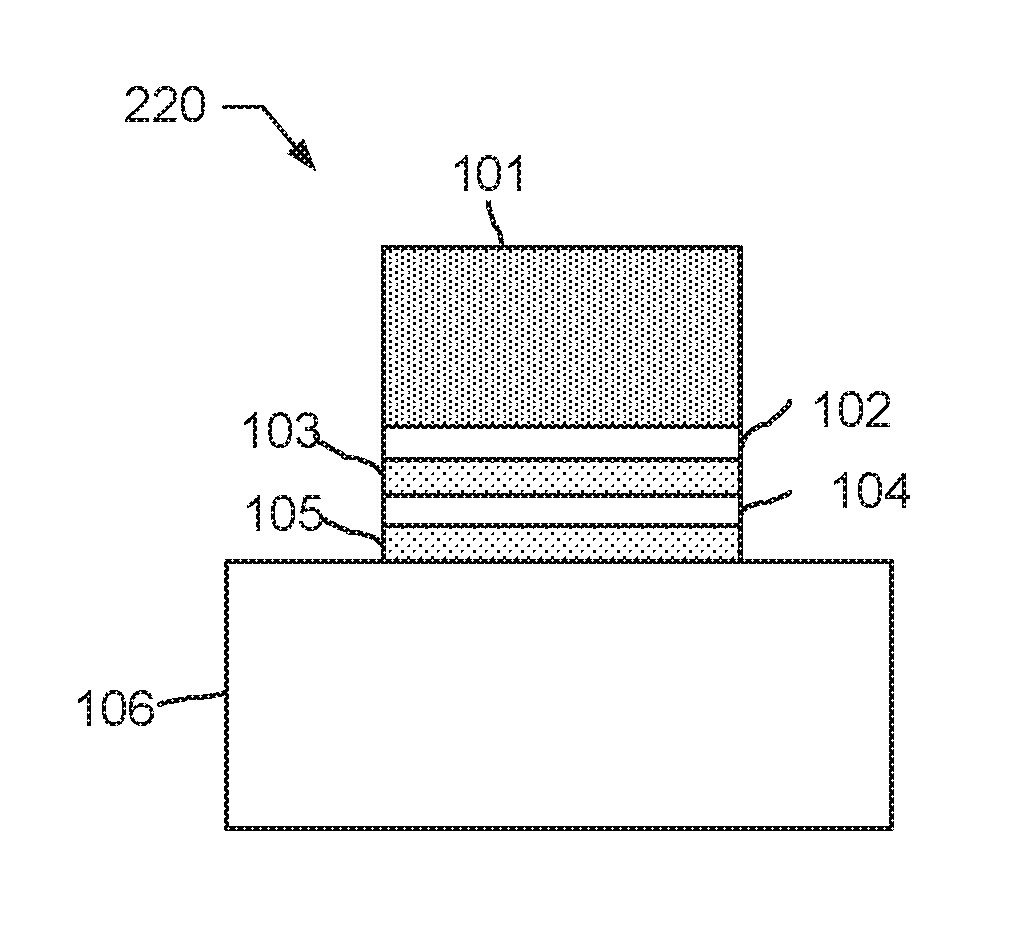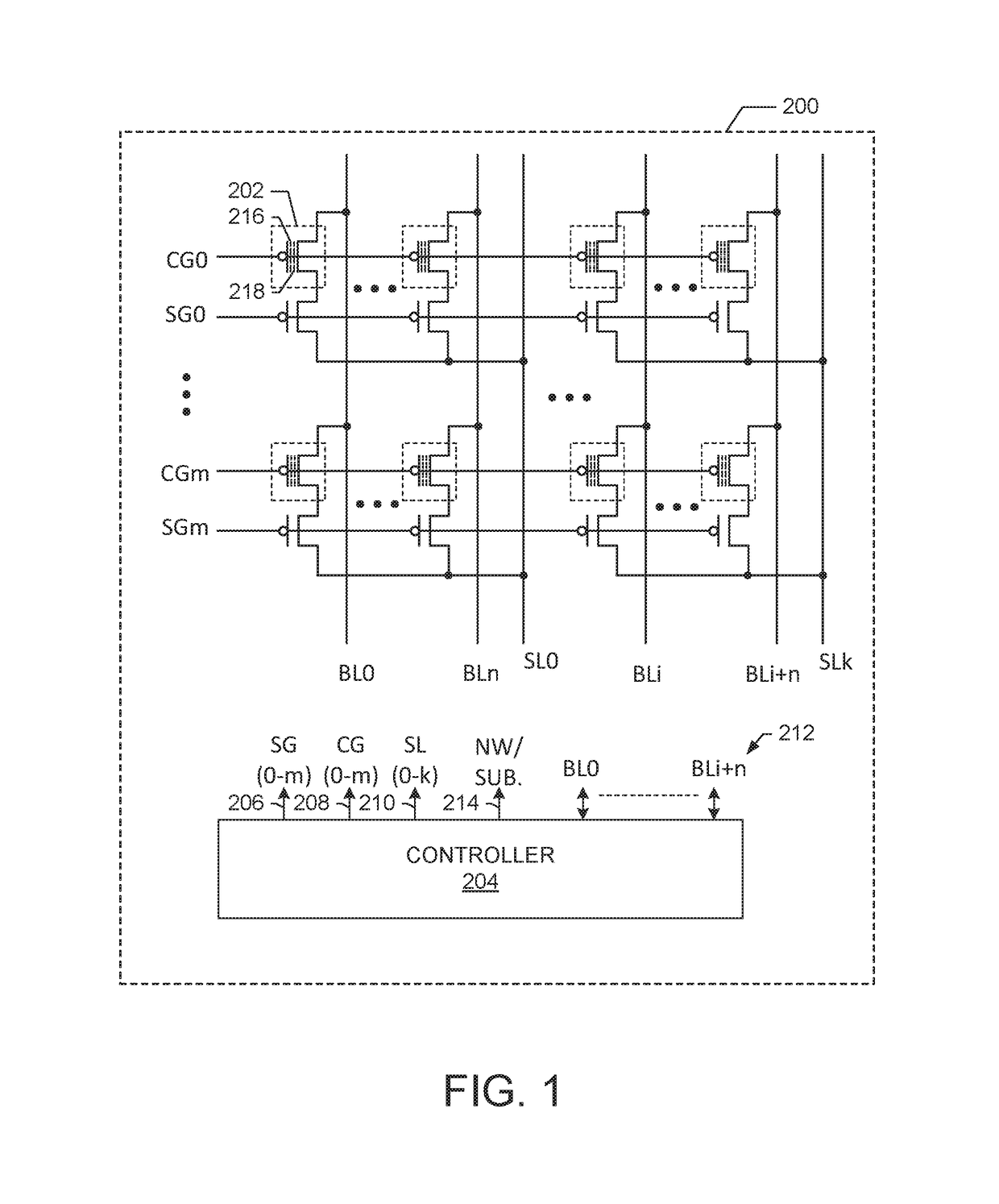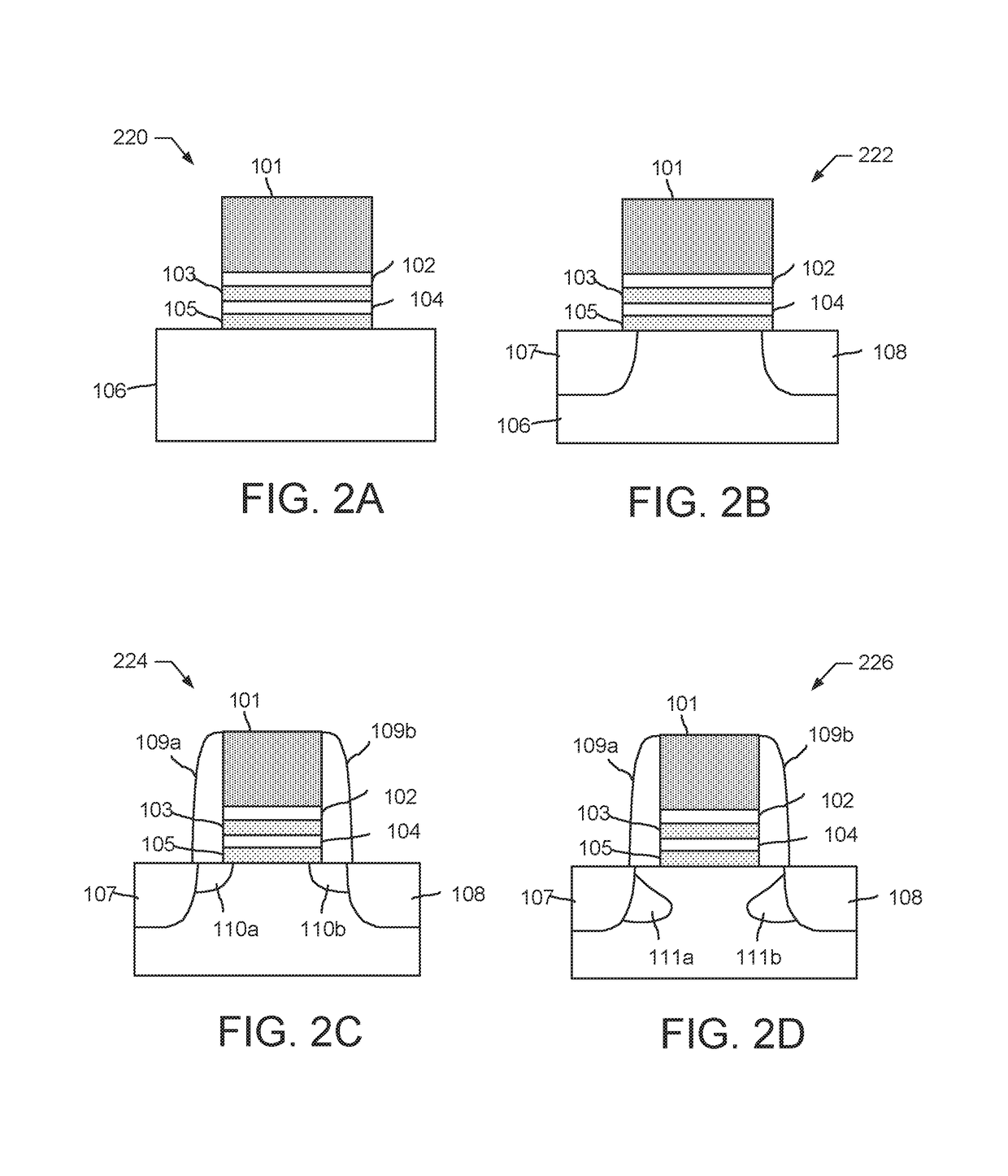Dual function hybrid memory cell
a memory cell and hybrid technology, applied in the field of memory and storage devices, can solve the problems of nvm memory devices being more expensive but less power, information stored in dram will eventually degrade, and consuming large amounts of power, so as to reduce write voltage, shorten data retention time, and reduce write voltage
- Summary
- Abstract
- Description
- Claims
- Application Information
AI Technical Summary
Benefits of technology
Problems solved by technology
Method used
Image
Examples
Embodiment Construction
[0022]Exemplary embodiments of the present invention are described herein in the context of a process, device, method, and apparatus for providing a novel dual function hybrid memory cell.
[0023]Those of ordinary skilled in the art will realize that the following detailed description is illustrative only and is not intended to be in any way limiting. Other embodiments of the present invention will readily suggest themselves to skilled persons having the benefit of this disclosure. Reference will now be made in detail to implementations of the exemplary embodiments of the present invention as illustrated in the accompanying drawings. The same reference indicators (or numbers) will be used throughout the drawings and the following detailed description to refer to the same or like parts.
[0024]It should be noted that the exemplary embodiments are not limited to SONONS cells only and the disclosed aspects can be applied to other types of charge-trapping cells. To realize the low-cost, hig...
PUM
 Login to View More
Login to View More Abstract
Description
Claims
Application Information
 Login to View More
Login to View More - R&D
- Intellectual Property
- Life Sciences
- Materials
- Tech Scout
- Unparalleled Data Quality
- Higher Quality Content
- 60% Fewer Hallucinations
Browse by: Latest US Patents, China's latest patents, Technical Efficacy Thesaurus, Application Domain, Technology Topic, Popular Technical Reports.
© 2025 PatSnap. All rights reserved.Legal|Privacy policy|Modern Slavery Act Transparency Statement|Sitemap|About US| Contact US: help@patsnap.com



